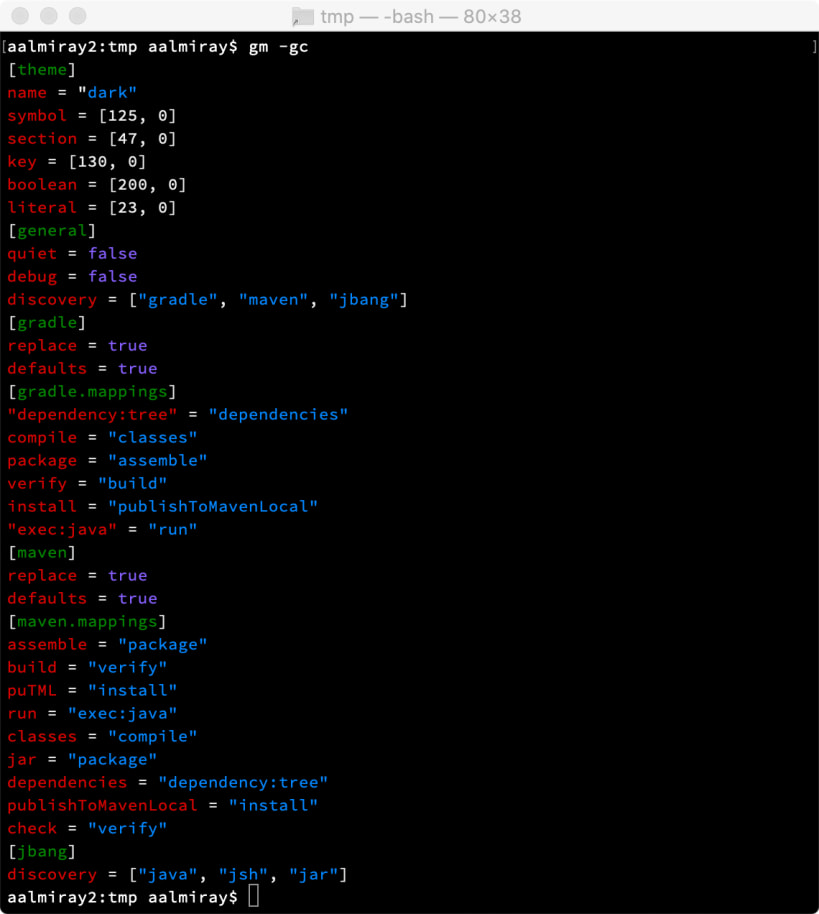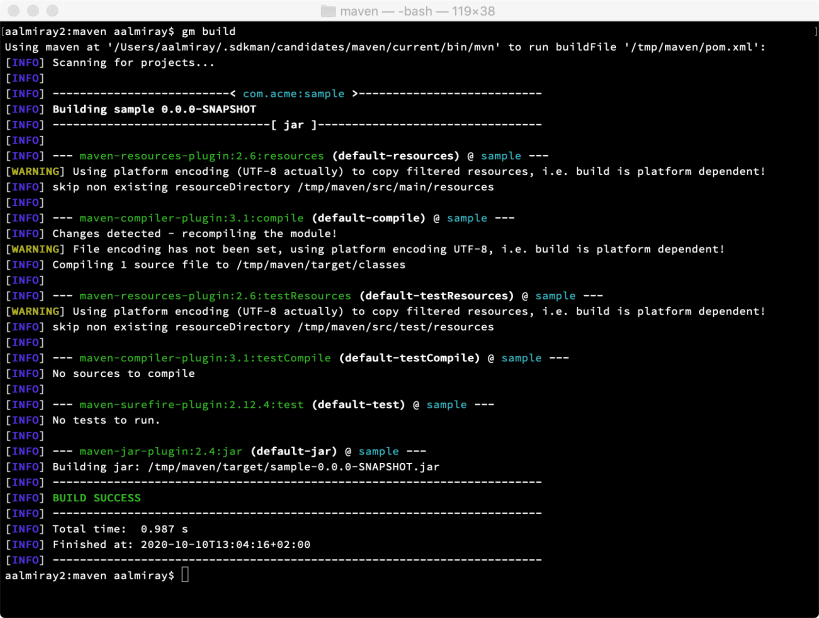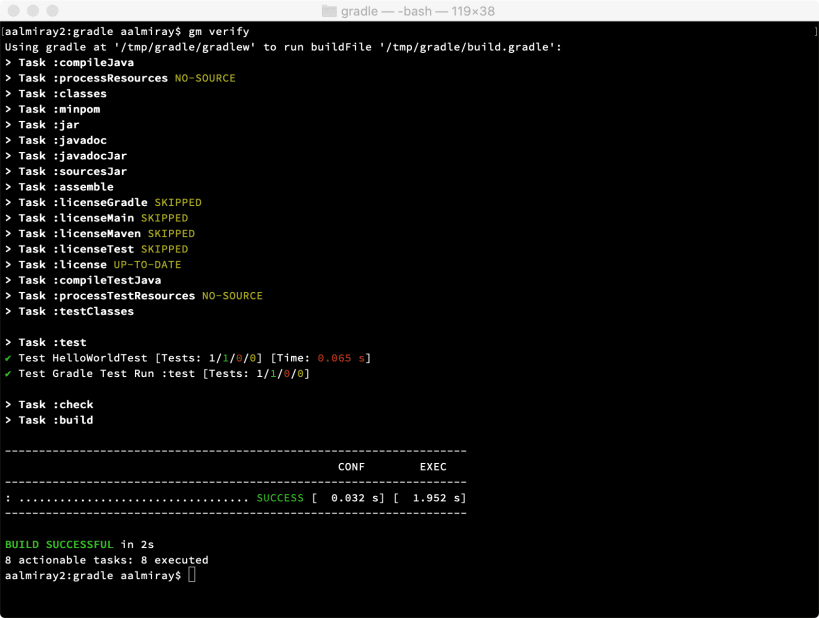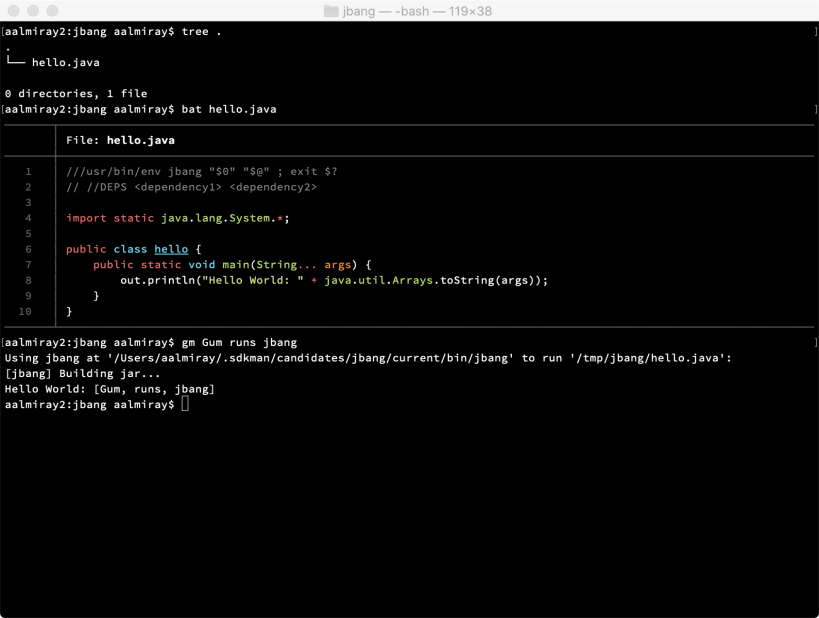




Gum is a Gradle/Maven/Ant/Bach/JBang wrapper written in Go, inspired in https://github.com/dougborg/gdub and https://github.com/srs/gw. Gum automatically detects if the project is Gradle, Maven, Ant, Bach, or JBang based and runs the appropriate command. However in the case that Gum guesses wrong you can force a specific build tool to be used. Similarly as gdub, Gum lets you invoke either Gradle, Maven, or Ant from anywhere within the project structure, not just the root directory.
Usage
Gum supports the following flags
Gum will execute the build based on the root build file unless -gn is specified, in which case the nearest build file will be selected. If a specific build file is given (-b, --build-file for Gradle; -f, --file for Maven, -f, -file, -buildfile for Ant) then that file will be used instead.
You are about to open
Do you wish to proceed?
Thank you for your report. Information you provided will help us investigate further.
There was an error while sending your report. Please try again later.
Snaps are applications packaged with all their dependencies to run on all popular Linux distributions from a single build. They update automatically and roll back gracefully.
Snaps are discoverable and installable from the Snap Store, an app store with an audience of millions.

On Arch Linux, snap can be installed from the Arch User Repository (AUR). The manual build process is the Arch-supported install method for AUR packages, and you’ll need the prerequisites installed before you can install any AUR package. You can then install snap with the following:
git clone https://aur.archlinux.org/snapd.git
cd snapd
makepkg -si
Once installed, the systemd unit that manages the main snap communication socket needs to be enabled:
sudo systemctl enable --now snapd.socket
If AppArmor is enabled in your system, enable the service which loads AppArmor profiles for snaps:
sudo systemctl enable --now snapd.apparmor.service
To enable classic snap support, enter the following to create a symbolic link between /var/lib/snapd/snap and /snap:
sudo ln -s /var/lib/snapd/snap /snap
Either log out and back in again, or restart your system, to ensure snap’s paths are updated correctly.
To install gum, simply use the following command:
sudo snap install gum --classic
Browse and find snaps from the convenience of your desktop using the snap store snap.

Interested to find out more about snaps? Want to publish your own application? Visit snapcraft.io now.